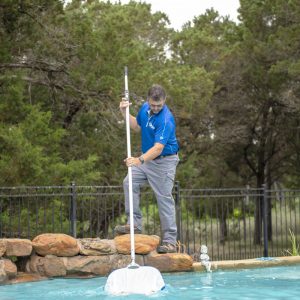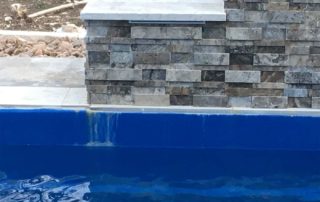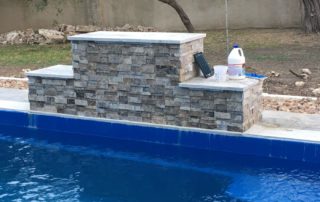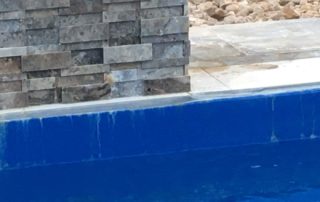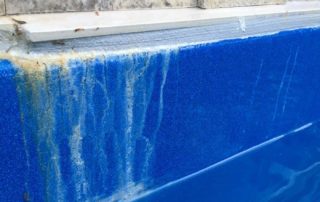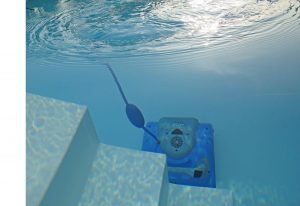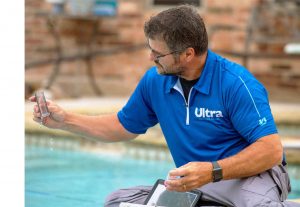A composite fiberglass swimming pool is easier to maintain and take care of, but that does not mean that you do not have to do anything. Just as you have to change the oil and rotate the tires in your car to keep it in top mechanical condition, fiberglass swimming pools must undergo a certain amount of maintenance to keep them healthy.
Like everything else around your home, your pool will get dirty. You will find leaves, bugs and other debris in your pool. A simple “skim, scoop, and vacuum” will take care of most of these items.
What is less easily seen are the remnants of body oils, hairs, shampoo, dead skin, and other wonderful things that all of us leave behind. For this, and all the other items that find their way into your pool, you address it by using a sanitizer to clean your pool. It is the harmonious work of all these chemicals coming together that creates the right environment for your pool to welcome guests.
For many families, that means investing in a chlorine system to sanitize their pool. And while there is a growing audience for salt-systems, but that is actually a form of chlorine – just produced in a different manner and with less amounts.


